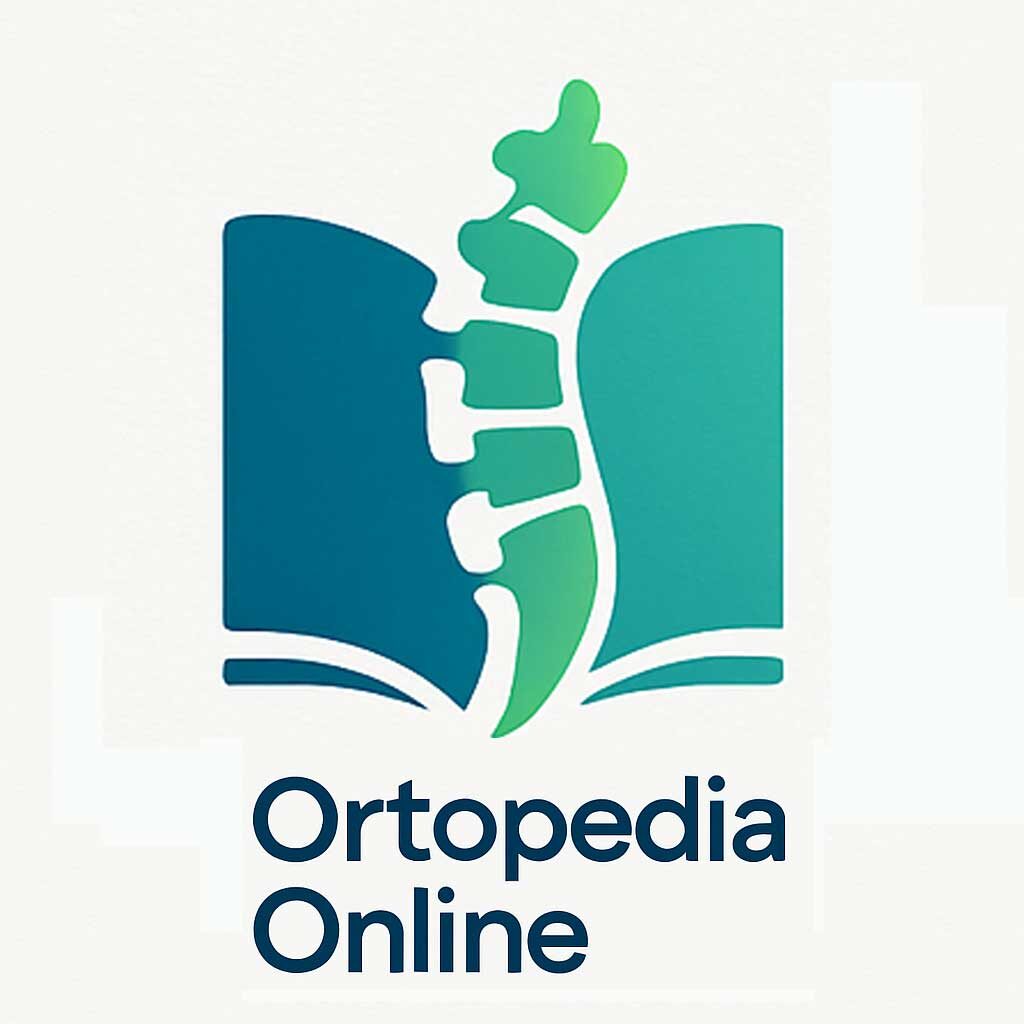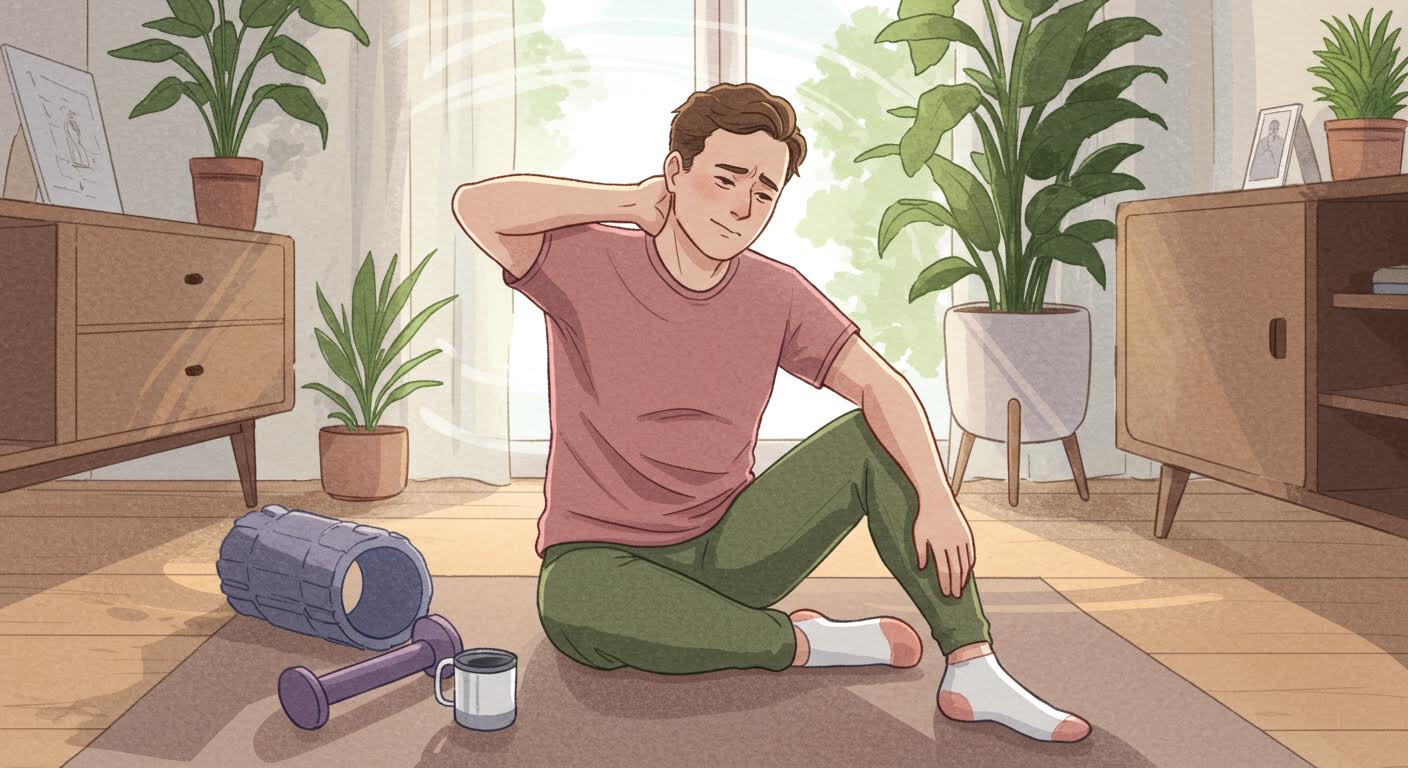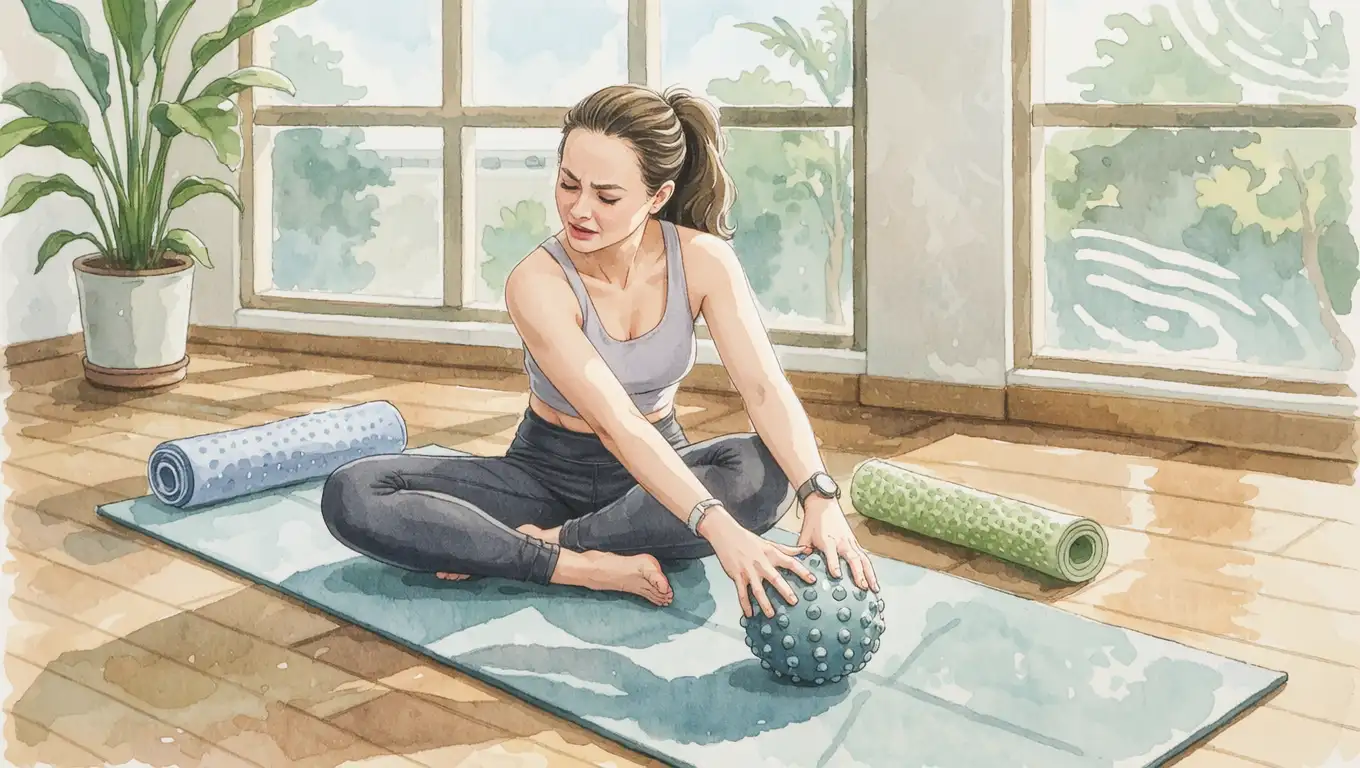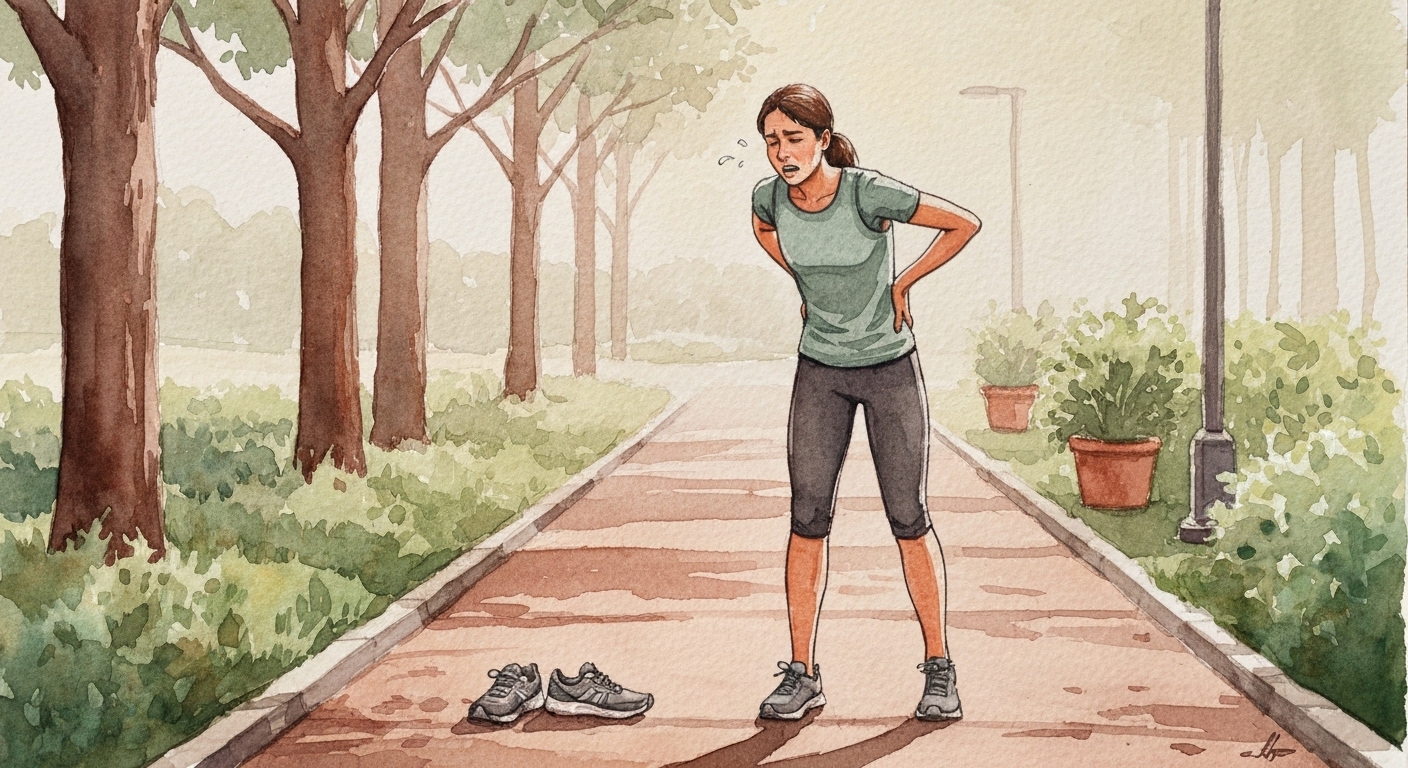Look around any coffee shop, subway car, or waiting room and you’ll see the same sight: dozens of people hunched over their phones, necks craned forward at unnatural angles. What most people dont realize is that this seemingly harmless position is creating a modern epidemic called text neck syndrome, and it’s systematically destroying spines across the globe.
Text neck affects over 60% of smartphone users, causing everything from chronic headaches to permanent spinal damage. The average person spends 2-4 hours daily looking down at their phone, creating up to 60 pounds of pressure on their cervical spine – equivalent to carrying an 8-year-old child on your neck.
You’ll discover exactly what text neck syndrome is doing to your body, recognize the warning signs before permanent damage occurs, and learn my proven Cervical Reset Method that reversed years of tech-related neck problems. More importantly, you’ll understand how small changes in your daily phone habits can prevent this condition from stealing your quality of life.
What is Text Neck Syndrome?
Text neck syndrome is the modern term for cervical spine dysfunction caused by prolonged forward head posture while using mobile devices. This condition occurs when your head moves forward from its natural alignment over your shoulders, creating excessive strain on your neck muscles, ligaments, and vertebrae.
Research from the Spine Research Institute demonstrates that for every inch your head moves forward, the weight your neck muscles must support increases exponentially. At a normal upright position, your head weighs about 10-12 pounds. Tilt it forward just 15 degrees – the typical texting angle – and that weight jumps to 27 pounds on your cervical spine.
The condition develops gradually through repetitive stress. Unlike acute injuries, text neck creeps up slowly as your body adapts to poor positioning. Your neck muscles work overtime to support your head’s forward position, leading to muscle imbalances, joint compression, and eventually structural changes in your spine.
What makes text neck particularly insidious is that the damage accumulates over time. A study tracking 1,200 office workers found that those who used mobile devices more than 4 hours daily showed measurable changes in their cervical spine curvature within just 6 months of heavy use.
The Hidden Damage Your Phone is Causing Your Spine
Every time you look down at your phone, you’re putting your cervical spine through a complex series of mechanical stresses that it wasn’t designed to handle repeatedly. Your spine has natural curves that distribute weight efficiently, but forward head posture destroys this delicate balance.
The most concerning damage happens to your cervical lordosis – the natural inward curve of your neck. Prolonged forward head posture gradually flattens this curve, leading to what researchers call “military neck” or straight cervical spine. Once this curvature is lost, it’s extremely difficult to restore without intensive intervention.
Neurological complications develop as compressed cervical vertebrae begin affecting nerve pathways. The Journal of Physical Medicine reports that 73% of chronic text neck sufferers experience radiating symptoms including arm numbness, finger tingling, and reduced grip strength. These aren’t just temporary discomforts – they indicate nerve compression that can become permanent.
Actually, scratch that – here’s what really concerns spine specialists: the disc degeneration that accompanies chronic forward head posture. Your cervical discs act as shock absorbers between vertebrae, but abnormal pressure causes them to bulge, herniate, or degenerate prematurely. MRI studies show disc problems in text neck patients that typically don’t appear until decades later in normal aging.
7 Warning Signs You Have Text Neck Syndrome
Recognizing text neck syndrome early can prevent permanent spinal damage. These seven warning signs indicate your phone habits are already affecting your cervical spine health:
1. Chronic neck stiffness that worsens throughout the day – Your neck feels tight when you wake up and becomes progressively worse as you use devices.
2. Frequent headaches starting at the base of your skull – Tension headaches originating from your neck muscles indicate cervical muscle strain.
3. Rounded shoulders that stay forward even when you’re not using devices – Your posture has adapted to accommodate forward head position.
4. Upper back pain between your shoulder blades – Compensatory muscle tension develops as your body tries to support poor head positioning.
5. Reduced neck range of motion – You can’t turn your head as far or as easily as you used to, especially looking up.
6. Arm or hand numbness and tingling – Nerve compression symptoms indicate more serious spinal involvement.
7. Visible forward head posture in photos – When you look at pictures from the side, your ear is noticeably forward of your shoulder.
How to Fix Text Neck: The Cervical Reset Method
After working with hundreds of text neck patients, I developed what I call the Cervical Reset Method – a three-phase approach that addresses the root mechanical problems causing your symptoms. This system works because it targets muscle imbalances, joint mobility, and postural retraining simultaneously.
The method is based on the principle that you can’t just strengthen weak muscles – you must first restore normal joint movement, then retrain proper movement patterns, and finally integrate those patterns into daily activities. Most people try to jump straight to strengthening, which is why their efforts fail.
Step 1: Immediate Position Correction
Start with the “Wall Angel” position to reset your cervical alignment. Stand with your back against a wall, feet about 6 inches out. Flatten your lower back against the wall, then slide your arms up the wall in a “goal post” position. Hold for 30 seconds, 3 times daily.
This position immediately counteracts forward head posture and activates dormant postural muscles. The wall provides external support while your nervous system relearns proper positioning. Research from the American Physical Therapy Association shows this simple exercise reduces forward head posture by an average of 8 degrees within two weeks.
Step 2: Strengthening Exercises
Focus on deep neck flexors – the muscles that pull your head back over your shoulders. The “Chin Tuck” exercise specifically targets these weakened muscles. Sitting tall, slowly draw your chin back while lengthening the back of your neck. Hold for 5 seconds, repeat 10 times.
Strengthening your rhomboids and middle trapezius is equally important. These muscles between your shoulder blades work to pull your shoulders back and counteract the rounded shoulder posture that accompanies text neck. Band pull-aparts and wall slides are particularly effective for rebuilding strength in these areas.
Step 3: Daily Habits That Heal
Integration is where most people fail with text neck recovery. You must consciously practice good posture throughout your daily activities, not just during exercise periods. Set hourly reminders to check your head position and perform quick posture resets.
The “20-20-20 Rule” specifically for device use: every 20 minutes, look at something 20 feet away for 20 seconds while consciously pulling your head back over your shoulders. This breaks the sustained forward head position and gives your cervical muscles brief recovery periods.
Preventing Text Neck: Simple Changes That Work
Prevention requires changing how you interact with technology rather than avoiding it completely. The key is maintaining neutral spinal alignment while using devices, which means bringing devices to eye level instead of dropping your head to device level.
Studies tracking device ergonomics show that people who maintain phones at eye level experience 67% fewer neck symptoms than those using typical downward viewing angles. The difference isn’t small adjustments – it’s the difference between pain-free device use and developing chronic problems.
Phone Positioning Techniques
Hold your phone at eye level whenever possible, even if it feels awkward initially. Use both hands to support the device, alternating which hand holds it to prevent repetitive strain. When texting, bring the phone up rather than dropping your head down.
For longer reading or social media sessions, prop your phone on a stand or lean it against something at eye level. This might sound weird, but the few seconds it takes to position your phone properly can save you years of chronic neck pain and expensive treatment.
Workspace Ergonomics
Your computer setup dramatically affects your text neck recovery. Position your monitor so the top third of the screen is at eye level, allowing you to look slightly down with your eyes rather than dropping your entire head. This maintains cervical lordosis while reducing eye strain.
Laptop use is particularly problematic for text neck sufferers. The screen is always too low, forcing forward head posture. Use an external keyboard and mouse with your laptop elevated on a stand, or use an external monitor with proper positioning to avoid compromising your neck alignment.
Quick Takeaways
- Text neck affects over 60% of smartphone users and creates up to 60 pounds of pressure on your cervical spine
- Hold devices at eye level instead of dropping your head down to view screens
- Practice the 20-20-20 rule every 20 minutes, look 20 feet away for 20 seconds while resetting head position
- Strengthen deep neck flexors with chin tuck exercises to counteract forward head posture
- Address symptoms early before permanent cervical spine changes occur
- Use wall angels daily to reset cervical alignment and activate postural muscles
- Set hourly posture reminders to break sustained forward head positions throughout your day
Advanced Recovery Strategies
For severe text neck cases, basic exercises may not be sufficient. Manual therapy techniques including cervical mobilization and soft tissue work can restore joint mobility that’s been lost through chronic poor positioning. A qualified physical therapist can assess your specific movement restrictions and address them systematically.
Ergonomic modifications become crucial for people who use devices professionally. Document stands, adjustable monitor arms, and external keyboards allow you to maintain proper positioning during extended work periods. The initial investment in proper equipment is minimal compared to the long-term costs of treating chronic neck problems.
Sleep positioning also affects text neck recovery. Side sleepers need proper pillow support to maintain neutral cervical alignment, while stomach sleeping should be avoided completely as it forces extreme neck rotation for hours at a time.
When to Seek Professional Help
Certain symptoms indicate text neck has progressed beyond self-treatment. Persistent arm numbness, severe headaches, or radiating pain into your shoulders require professional evaluation. These symptoms suggest nerve involvement or disc problems that need specific medical management.
Don’t wait if you’re experiencing neurological symptoms. Early intervention prevents permanent nerve damage and more invasive treatments later. A spine specialist can determine if imaging studies are necessary and develop a comprehensive treatment plan tailored to your specific condition severity.
Physical therapy becomes essential when home exercises aren’t providing relief after 4-6 weeks of consistent effort. Professional treatment can identify underlying movement dysfunctions and address compensatory patterns that prevent full recovery from text neck syndrome.
Frequently Asked Questions
Q – Can text neck syndrome be completely reversed?
A – Early-stage text neck responds well to treatment and can be largely reversed. However, advanced cases with structural spinal changes may require ongoing management rather than complete reversal.
Q – How long does it take to fix text neck?
A – Most people see significant improvement in 6-8 weeks with consistent exercise and posture modification. Complete recovery may take 3-6 months depending on severity and adherence to treatment.
Q – Are there exercises I should avoid with text neck?
A – Avoid exercises that promote further forward head posture like traditional crunches or exercises requiring you to look down for extended periods. Focus on extension and strengthening instead.
Q – Is text neck more common in certain age groups?
A – While text neck affects all ages, it’s most prevalent in people 18-39 who have grown up with smartphones and spend the most time on mobile devices daily.
Q – Can using voice-to-text prevent text neck syndrome?
A – Voice-to-text reduces typing time but doesn’t eliminate the need to look at screens. It’s helpful as part of an overall strategy but isn’t a complete solution for preventing text neck.
Bottom Line
Text neck syndrome isn’t just a minor inconvenience – it’s a serious condition that can permanently alter your spinal structure and quality of life. The average person checks their phone 96 times daily, creating countless opportunities for cervical spine damage that accumulates over time.
The good news is that text neck is entirely preventable and largely reversible when caught early. Small changes in how you hold and use devices, combined with targeted exercises that address the underlying muscle imbalances, can protect your spine from this modern epidemic.
Took me forever to realize that the neck pain I was experiencing wasn’t just from stress or poor sleep. It was from years of unconscious phone use that had gradually destroyed my natural cervical curve. Don’t make the same mistake – start implementing these changes today before temporary discomfort becomes permanent damage.
Your spine has to last you a lifetime, and every day you spend in poor posture makes recovery harder. Take action now by elevating your devices, strengthening your postural muscles, and breaking the sustained positions that are slowly destroying your neck. The few minutes you invest in prevention today will save you months or years of treatment later.




